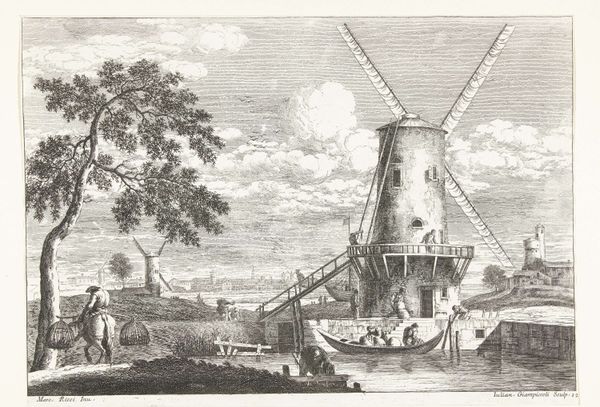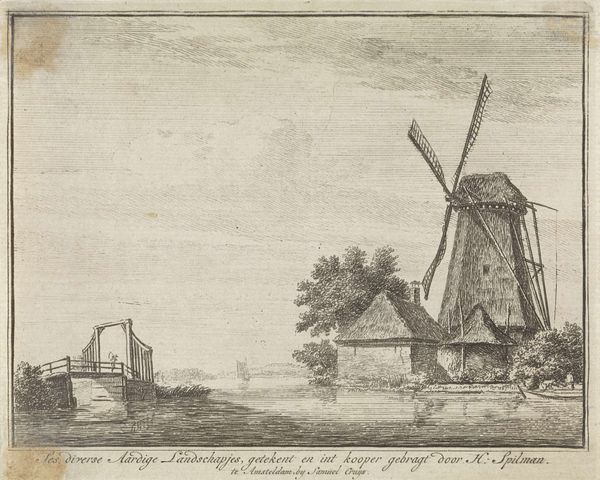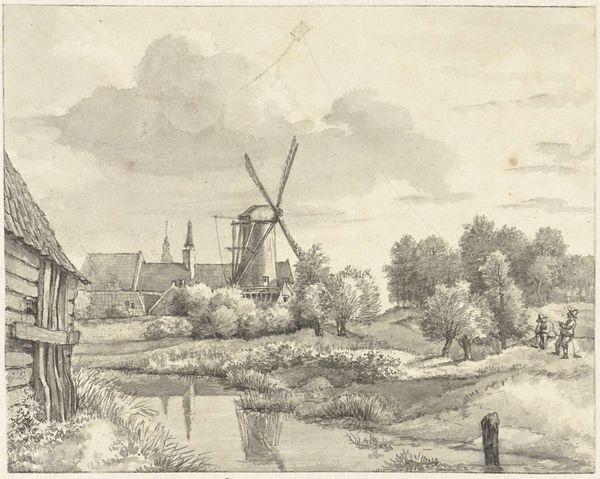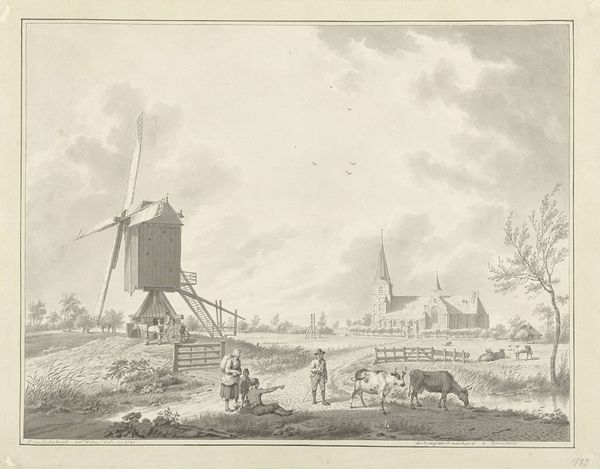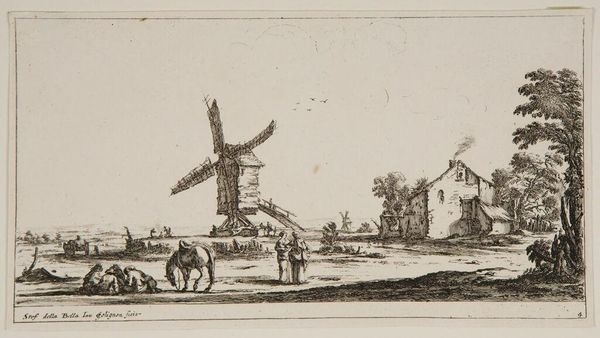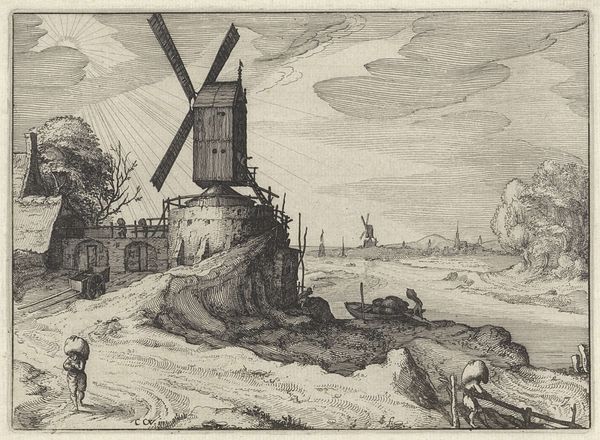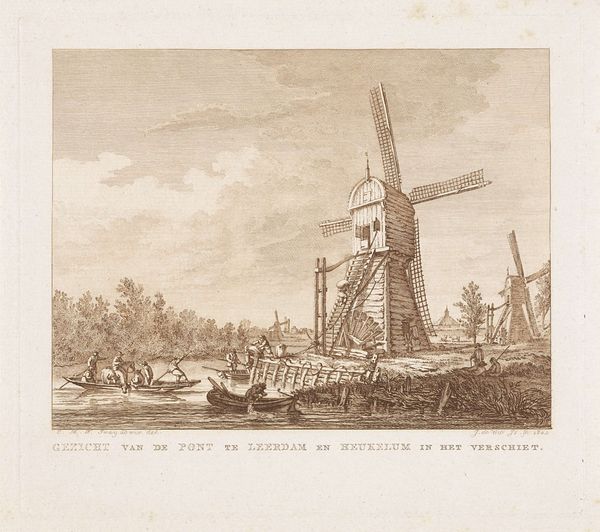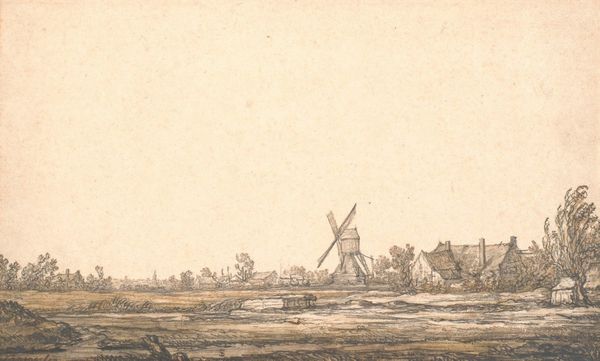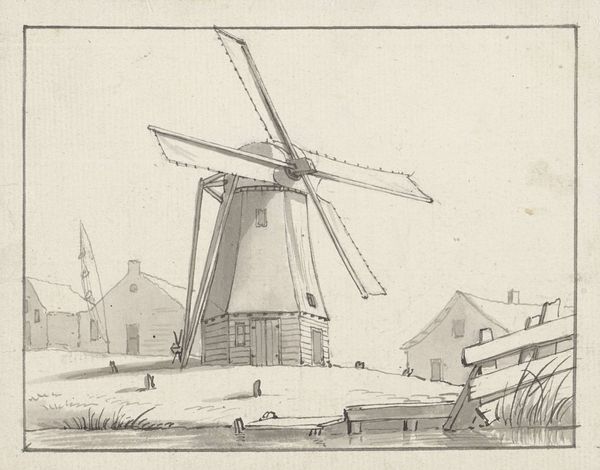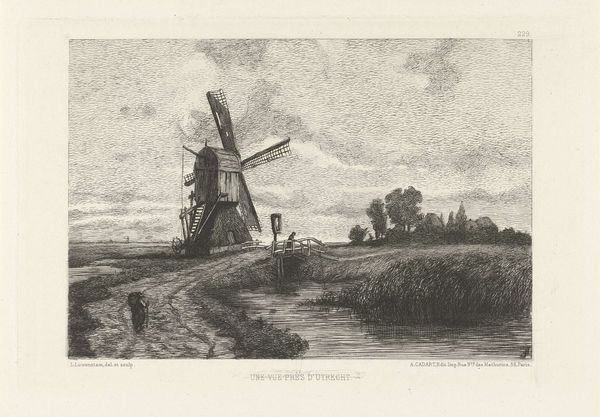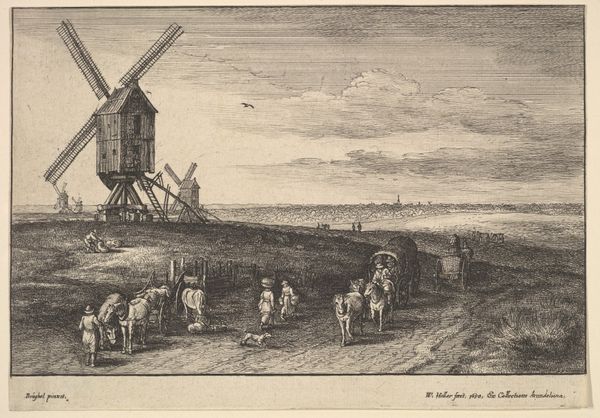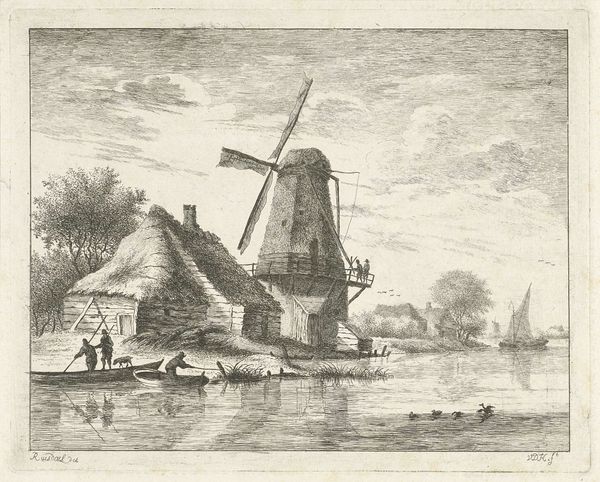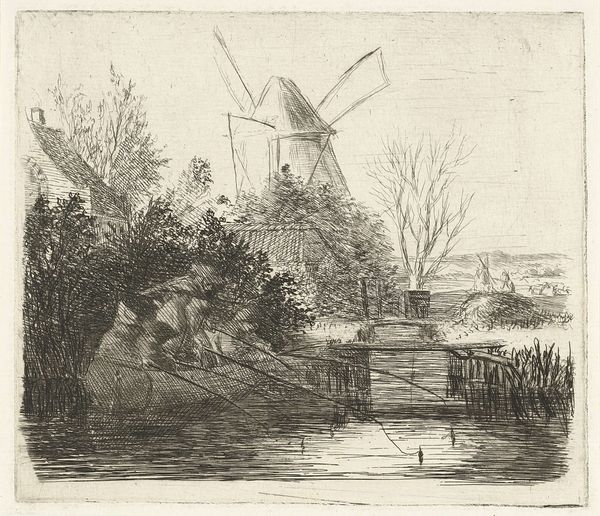
print, engraving
#
baroque
#
dutch-golden-age
# print
#
landscape
#
line
#
cityscape
#
engraving
Dimensions: height 250 mm, width 349 mm
Copyright: Rijks Museum: Open Domain
Curator: This is Giuliano Giampiccoli's "Landschap met molen aan water," or "Landscape with mill on water," created around 1739-1740. It’s currently held here at the Rijksmuseum. Editor: It strikes me as so meticulously rendered, almost obsessively so. The textures – stone, water, vegetation – are painstakingly captured. It speaks of a sustained engagement with the subject, a real labor of looking and representing. Curator: Absolutely. The choice of engraving as a medium is quite deliberate, considering the detailed rendering we see. What’s fascinating here is the juxtaposition of industry, in the form of the windmill, against this sort of idyllic pastoral scene. The windmill is not merely functional; it becomes a symbol of progress. Editor: Precisely. You see this preoccupation reflected in the artist's work process too, transforming landscape into cultural artifact via laborious acts: physically incising marks upon the plate. It is no accident. The means dictate the symbolic weight. Curator: The windmill as a cultural symbol evolved significantly in Dutch art. Initially just part of the landscape, they became powerful emblems of Dutch ingenuity and prosperity. In Giampiccoli’s composition, we witness this symbolic weight accumulate even more layers when combined with details of daily commerce. Editor: Consider all human labor, the people actively working in relation to the landscape, whether in that small boat by the stairs or the figure on horseback down to the water level on the right. Labor is interwoven, shaping, moving through the entire piece—even down to the engraved textures. It is about showing process, use, materiality of human and environment relationship. Curator: Yes, everything seems deeply connected through these industrious and communicative exchanges. The windmill then anchors us not just to place, but to time, representing a specific period of economic and cultural flourishing. Editor: The work speaks subtly, reflecting production within the artist's moment while highlighting human manipulation over materials that surround. So, it reflects an important process within its imagery as a finished piece. Curator: So much is encoded through simple means, even now as a modern viewer! I'll certainly pause here longer on future visits to appreciate the image making in full effect! Editor: Absolutely! These sorts of image making carry remarkable implications when carefully unpacked.
Comments
No comments
Be the first to comment and join the conversation on the ultimate creative platform.
